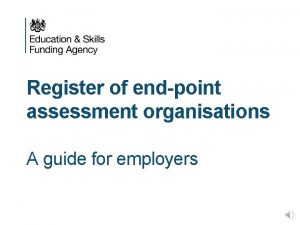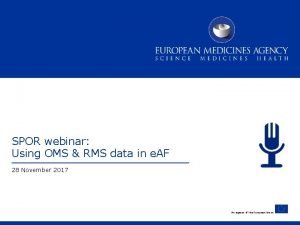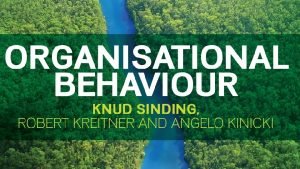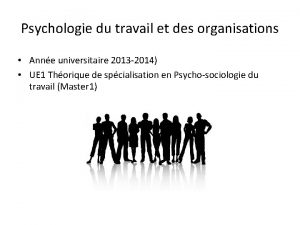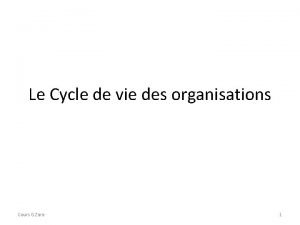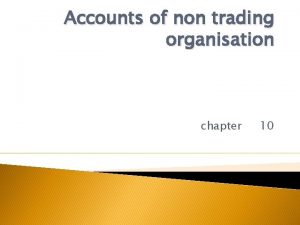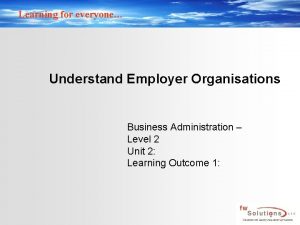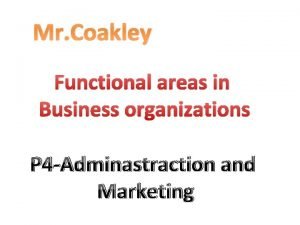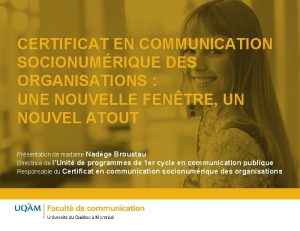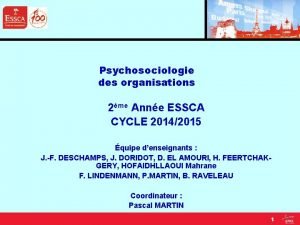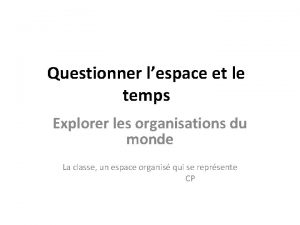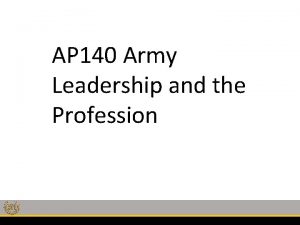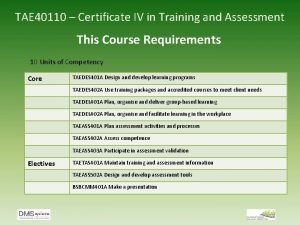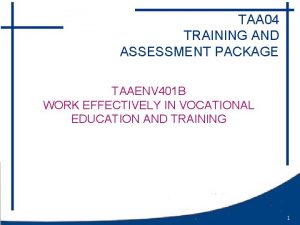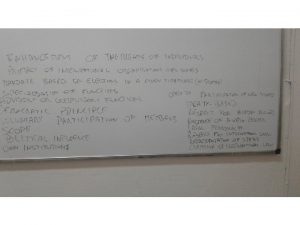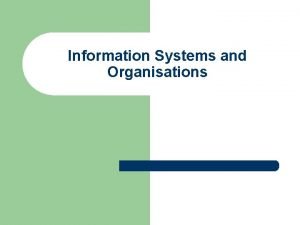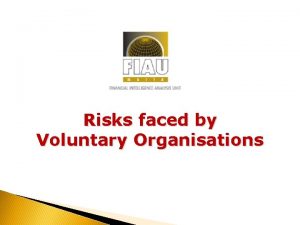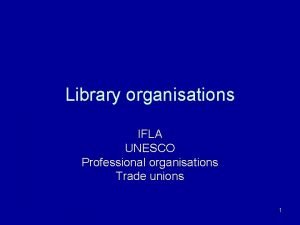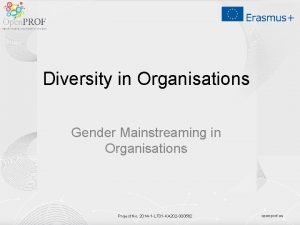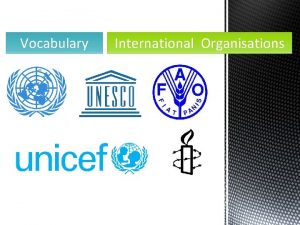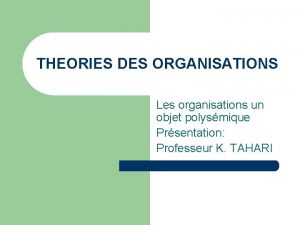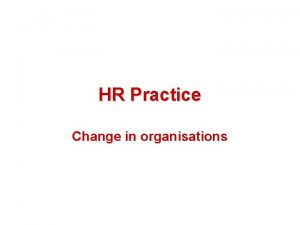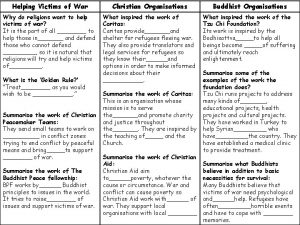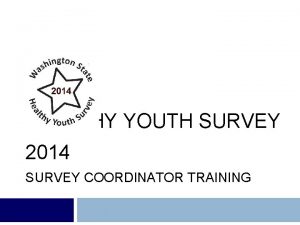Survey of Assessment and Training Organisations Dr Nundita


















- Slides: 18

Survey of Assessment and Training Organisations Dr. Nundita Reetoo Dr. Ewan Macdonald Dr. Knut Skyberg

Background • UEMS • Mutual recognition of qualifications across Europe – To facilitate movement across the EU • Mutual recognition of competencies internationally – Discussion and sharing ideas between organisations involved in the training and assessment of specialists worldwide – Quality standards

Phase 1 ATOM project • Network Building – Identify the key organisations who will contribute to the test methodologist experts group & to the selfsustaining network of academic and assessment bodies • Survey Aims to Identify – current assessment methodologies used in different countries – differences and similarities in the methods used – assessment methodologies appropriate for the assessment tool – competencies used in each participating country & to what extent they match the WHO list of competencies

Survey Participants – Assessment Specialists – Training co-ordinators – Training and assessment bodies Survey Methodology • Survey conducted by Email • Pilot conducted – Emailed 25 contacts response 6 • Main study – Emailed 228 contacts – Advertised through an international forum

Design of questionnaire • Explore differences between countries in – – Training prerequisites Methods of training Length of training Assessment methodologies • Blank Canvas/Open questions – too varied response • Questionnaire designed to suit as many respondents as possible including a mixture of open and closed questions

Respondents Country Frequency Australia 2 Macedonia 1 Austria 1 Netherlands 4 Belgium 2 New Zealand 1 Canada 1 Norway 1 Czech Republic 1 Poland 1 Finland 1 Romania 1 France 1 Serbia 1 Germany 1 Slovenia 1 Greece 1 South Africa 5 India 2 Spain 7 Ireland 1 Switzerland 1 Italy 2 UK 2 Japan 1 USA 1 • 43 responses, 26 countries

Data Analysis Quantitative data – Statistical package for social scientists SPSS V 14 – Data coding – Score analysis • Scoring system to assign points according to each individual’s ranking order – 1 -16 ranks – Lowest ranks assigned highest scores – Not ranked-score 0 • Qualitative Data – Emerging themes

Organisation Description Type of Organisation Frequency Percent Training Body 17 40% Assessment Body 4 9% Training and assessment body 17 40% Supervisory body 1 2% Other 4 9% Total 43 100

Organisation Sector Fre Se qu ct enc or y Pri va te 4 Pu bli c 35 P er ce nt 9. 3 % 81. 4 % Ot he r 9. 3 % 4

Training Prerequisites OM training prerequisite Percentage Countries Notes Undergraduate Degree 100% 3 -7 years Postgraduate Degree 30. 2% Diploma/MPH/MRCP equivalent Postgraduate Experience 46. 5% 6 months-3 years Other Criteria: Screening Exams, Associate of Faculty, currently in a job with some OM responsibilities

Training of specialists in OM Training of specialist trainees Percentage Countries Academic Training 100% General Clinical Posting 61% OH Clinical Posting 100% Other components of training: Membership exams, sub-specialisations

Proportion of respondents currently using assessments Assessment Type Number of Countries Percentage Workplace Assessments 28 65% Research Based Dissertation/Thesis 26 60% Log Book/training records/portfolios 26 60% Project Assessment 24 56% Epidemiological Assessments 24 56% Attendance 24 56% Oral Examinations 23 53% Essay Questions 21 49% Multiple Choice Questions 19 44% Objective Structured Clinical Examination 19 44% Literature Review 19 44% Traditional long clinical cases 18 42% Modified Essay Papers-scenario based 15 35% Short Questions Paper 12 28% Photographic Slide Show Questions 11 26%

Weightage of importance of assessments • Difficult to interpret results – Difficulty in respondents to assign weightage • Some of the assessments were necessary for award of completion but carried no weightage in final exam • Some assessments were incorporated in others

Preference for ATOM tool

Preferences for ATOM tool PREFERENCE RANK PRESENT USAGE Objective Structured Clinical Examination 1 9 Log Book/training records/portfolios 2 3 Workplace Assessments 3 1 Research Based Dissertation/Thesis 4 2 Multiple Choice Questions 5 8 Oral Examinations 6 6 Modified Essay Papers-scenario based 7 12 Traditional long clinical cases 8 11 Literature Review 9 10 Project Assessment 10 4 Photographic Slide Show Questions 11 14 Short Questions Paper 12 13 Essay Questions 13 7 Epidemiological Assessments 14 5 ASSESSMENT TYPE

Preference for ATOM tool format

Competencies • 15/26 countries (58%) indicated that the competencies required of specialists trainees in occupational medicine were based on the published WHO list of competencies

Conclusion • Identification of – current assessment methodologies – differences and similarities in the methods used – assessment methodologies appropriate for the assessment tool – the competencies used in each participating country & to what extent they match the WHO list of competencies • Network of contacts to carry the project forward
 End point assessment register
End point assessment register Abcd in acls
Abcd in acls Contemporary organisations
Contemporary organisations Higher business questions
Higher business questions Spor
Spor How humans behave in organisations
How humans behave in organisations Psychologie du travail et des organisations dolan
Psychologie du travail et des organisations dolan Cycle de vie des organisations
Cycle de vie des organisations Non trading organisation meaning
Non trading organisation meaning Understand employer organisations
Understand employer organisations Functional areas in business organisations
Functional areas in business organisations Communication socionumérique des organisations
Communication socionumérique des organisations Psychosociologie des organisations
Psychosociologie des organisations Schools as organisations
Schools as organisations Explorer les organisations du monde
Explorer les organisations du monde Army ethical lenses
Army ethical lenses Survey level assessment aimsweb plus
Survey level assessment aimsweb plus Tae40110 cert iv in training and assessment
Tae40110 cert iv in training and assessment Taa training and assessment
Taa training and assessment
